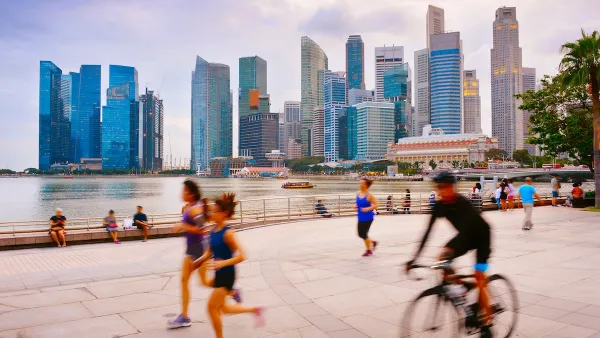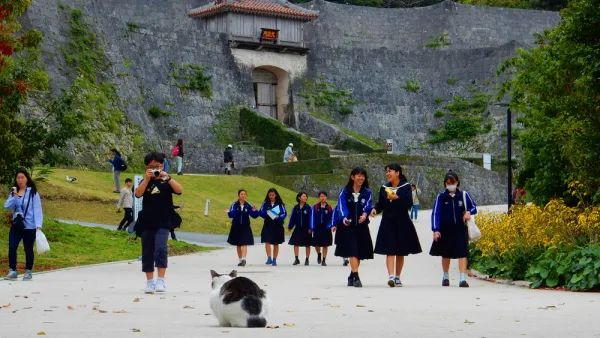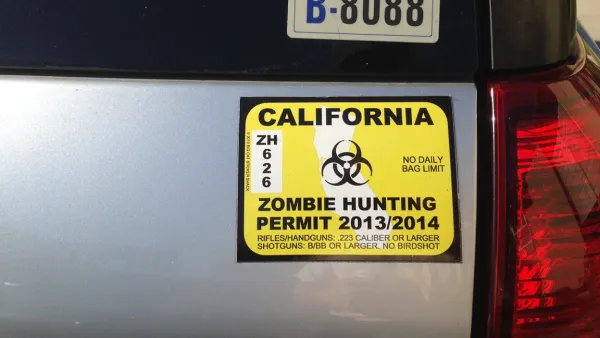New Yorkers can expect to live eight years longer than they could just 20 years ago. Do Mayor Bloomberg's policies and initiatives deserve some credit? A mounting body of evidence ties urban form to human health.
Oliver Balch reports on the mounting ways in which public officials are promoting policies that recognize the link between the built environment and public health. "For Johanna Ralston, chief executive of the World Heart Federation (WHF), the example of New York provides a stellar case of 'retrofitting' a city to make it more heart-healthy. She points to numerous public health interventions introduced under Mayor Michael Bloomberg: a ban on smoking in public places, new bicycle routes, calorie labels on restaurant menus, advertising campaigns around the benefits of taking exercise, to name just a few. 'This all helps build the body of evidence about what an important platform cities can be', she states."
The dangers of smoking are now widely recognized, but what about the dangers of auto-centric lifestyles? "A recent study by the London School of Economics finds that people are likely to live longer in cities like Tokyo, Singapore and Hong Kong, where public transport and walking are favoured over private car use....The findings suggest urban form is a 'contributing factor' to human health, says Ricky Burdett, director of the LSE Cities programme: 'One can begin at least to speculate that these correlations are not just to do with where people of different education or income come from, but that their physical conditions will affect their wellbeing and health.'"
The responsibility to respond to this body of knowledge shouldn't fall solely on the public sector, says Balch. "House builders, infrastructure providers and architects are clearly best placed to take direct action in how our cities are designed. More joined-up thinking is required, says Martin Hunt, head of networks and partnerships for Forum for the Future."
"Take London, he says. The UK capital is currently suffering a housing shortage. 'We want to build homes, but we want to build them in the right way. That requires green space, the ability to exercise and move around freely and safely, and being in an environment that's well-lit, car-free and with good access to public transport', he states."
As Angie Schmitt reports in Streetsblog, the Blue Zones Project, which is run by Healthways, in partnership with AARP, Wellmark Blue Cross Blue Shield, and the Walkable and Livable Communities Institute, is one such example of the private and non-profit sectors driving the design of places that encourage physical activity and social interaction. "More than a dozen places, from the Los Angeles suburbs to small-town Iowa, have been designated as “Blue Zone” communities," notes Schmitt. "The partnership is helping these places advance complete streets, walking school buses, and safe routes to school. The program also focuses on goals like gardening, volunteering, smoking cessation, and providing access to fresh food."
"Blue Zones matches up communities with the Walkable and Livable Communities Institute to help make their infrastructure conducive to healthy living and physical activity, by shifting the focus from designing for autos to designing for walking and social interaction."
FULL STORY: How we can improve the impact of urban living on health and wellbeing

National Parks Layoffs Will Cause Communities to Lose Billions
Thousands of essential park workers were laid off this week, just before the busy spring break season.

Retro-silient?: America’s First “Eco-burb,” The Woodlands Turns 50
A master-planned community north of Houston offers lessons on green infrastructure and resilient design, but falls short of its founder’s lofty affordability and walkability goals.

Delivering for America Plan Will Downgrade Mail Service in at Least 49.5 Percent of Zip Codes
Republican and Democrat lawmakers criticize the plan for its disproportionate negative impact on rural communities.

Test News Post 1
This is a summary

Test News Headline 46
Test for the image on the front page.

Balancing Bombs and Butterflies: How the National Guard Protects a Rare Species
The National Guard at Fort Indiantown Gap uses GIS technology and land management strategies to balance military training with conservation efforts, ensuring the survival of the rare eastern regal fritillary butterfly.
Urban Design for Planners 1: Software Tools
This six-course series explores essential urban design concepts using open source software and equips planners with the tools they need to participate fully in the urban design process.
Planning for Universal Design
Learn the tools for implementing Universal Design in planning regulations.
EMC Planning Group, Inc.
Planetizen
Planetizen
Mpact (formerly Rail~Volution)
Great Falls Development Authority, Inc.
HUDs Office of Policy Development and Research
NYU Wagner Graduate School of Public Service





























